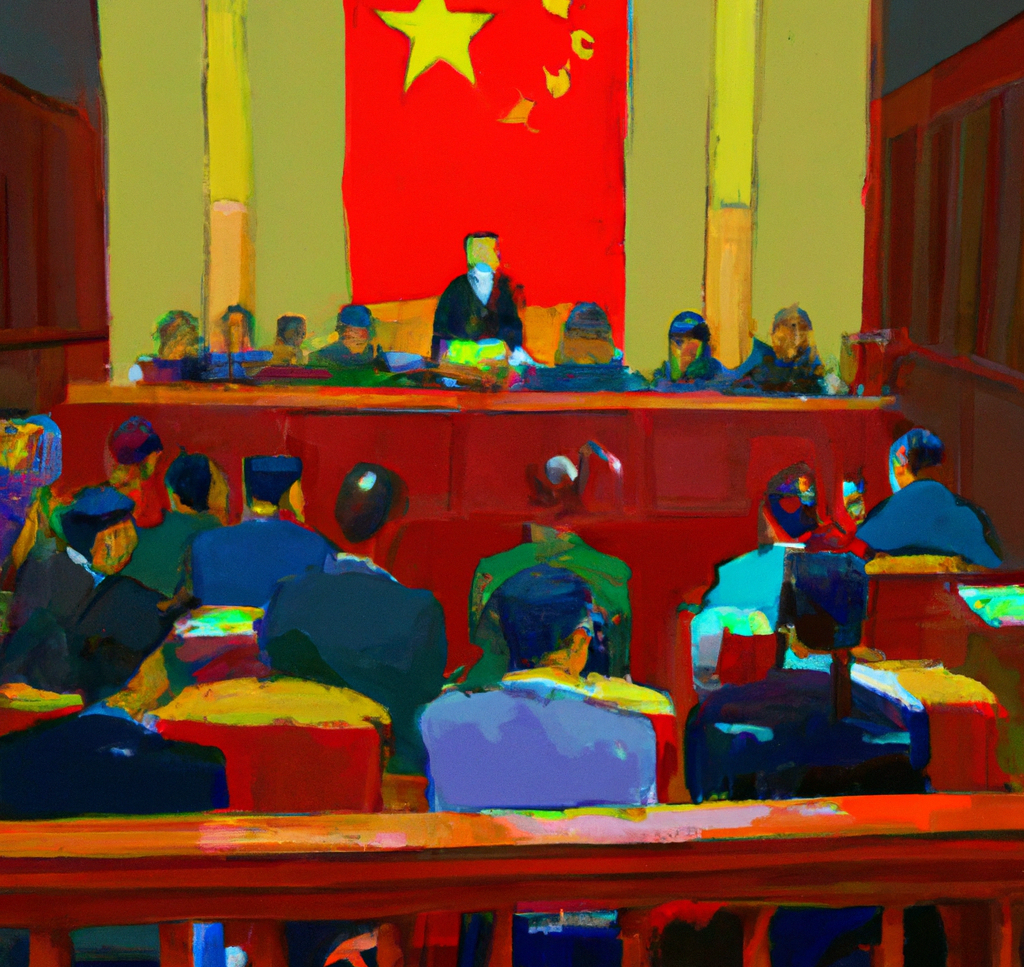A new paper by Tianhao Chen, Wei Xu and Xiaohong Yu

In 2015, the revision of China’s Administrative Litigation Law introduced the Chief Officials’ Appearance System (COAS). The system requires agency leaders themselves, rather than their legal counsel, to appear in court and defend their administrative actions. Unlike other post-2014 legal reforms aimed at empowering the judicial system and fending off local protectionism, the COAS uniquely enhance the engagement of political officials in the judiciary process. This approach is based on the belief that increased participation will help officials to gain a better understanding of public concerns and improve administrative litigation quality. The detailed workings of the COAS were laid out in this previous blogpost by Nina Rotermund.
In this comprehensive study, we set out to assess how and whether the optimistic goals set for the COAS were achieved. Through an empirical analysis of 1551 administrative litigation cases in a Beijing local court and extensive field research across 12 other provinces, the study uncovers unexpected outcomes that merit a closer examination.
Contrary to official expectations, we find that the COAS reproduces the administrative grievances that it is tasked to resolve. Data from Beijing revealed that plaintiffs were 5.08 times more likely to appeal or file a new suit over the same issue when chief officials made court appearances. This tendency was attributed to a mismatch between the plaintiffs’ expectations for meaningful engagement and the often-detached demeanour of the officials, who sometimes resorted to reading from prepared statements without genuinely addressing the plaintiffs’ concerns. This lack of meaningful interaction left plaintiffs dissatisfied, propelling them to pursue further legal avenues.
Moreover, the number of administrative cases overall and the rates of the government losing cases before district leaders’ court attendances in Beijing’s 16 districts were not significantly higher than after they appeared in courts, indicating that lawful governance did not improve. This issue is related to the officials’ generally apathetic approach to court appearances. Statistics indicate that 73.6% of officials planned to conduct the required court visits only in the fourth quarter, when the annual cadre evaluation was underway. This figure is disproportionately higher than the proportions in the other three quarters. Further, the amount of officials’ appearances in court barely surpassed the number of appearances required to fulfil the performance evaluation criteria. This indicates that officials’ appearances are more about fulfilling administrative assessment requirements rather than genuinely improving lawful administration.
“[…] plaintiffs were the so-called nail households (dingzihu 钉子户), ones who refused to relocate and came to court only to claim better compensation. They wouldn’t be pleased by simply meeting the officials in person. Instead, sometimes they even interrogated the officials and we had to interrupt and stop them.”
Judge in Qinghai, August 2022
Despite this, the study also observed surprisingly impartial and even strategic responses from the court. Statistical analysis of Beijing data shows that the involvement of district leaders in court did not skew judicial outcomes in favour of the government. This is partly due to the strategic appointment of high-ranking judges in cases involving chief officials, ensuring a balance of authority in the courtroom. Moreover, the analysis reveals a nuanced trend wherein courts are more likely to rule against government officials who are nearing the end of their term, suggesting a strategic consideration of future relations with the administrative agencies.
Expanding the study nationwide revealed similar trends across China, albeit with regional variations. Through the “China Judicial Politics Database,” which includes 70% of publicly available cases, we identified 28,805 instances of official court appearances. Of these, a mere 146 involved officials at the bureau and deputy bureau levels, noting that the overall frequency of government leaders appearing in court remains low nationwide. Interviews conducted with judges, lawyers, and government officials from 12 provinces, including Zhejiang, Henan, Guizhou, Jiangsu, Guangdong, Sichuan, Qinghai, Shaanxi, Tianjin, Liaoning, Hebei, and Xinjiang, presented a complex but consistent picture. Similar to Beijing, official court appearances were rare and typically motivated by assessment requirements, leading to tense courtroom dynamics between disinterested officials and pragmatic plaintiffs. Courts employed diverse strategies to manage their interactions with the government, sometimes using the theatrical nature of appearances to exert pressure.
“[…] sometimes I would intentionally tolerate plaintiffs’ emotional expressions to exert extra pressure on
Judge in Zhejiang, April 2022
administrative agencies.”
In sum, the study reveals that, contrary to what the creators of COAS had expected, the COAS has not significantly ameliorated administrative dispute resolution. Instead, it has resulted in a renewed triad of administrative litigation: apathetic state agencies, increasingly agitated plaintiffs and strategically empowered courts.
The unintended impacts of the COAS carry certain implications. Despite previous views of administrative litigation in China as no more than a “frail weapon” due to political constraints, the courts appear somewhat empowered, benefiting from the cumulative effects of several reform measures implemented over the last four decades and the strategic behaviours of judges. Additionally, plaintiffs’ willingness to pursue further legal action, fuelled by an increased legal awareness and desire for justice, challenges the notion that official appearances alone would placate citizens. Still water runs deep, and the perverse impact of the COAS implies that the rule-based approach to dispute resolution would be a more desirable and effective route than the paternalistic approach.
The paper ‘Administrative Litigation in China: Assessing the Chief Officials’ Appearance System’ was published in The China Quarterly (free draft available here). Tianhao Chen is an associate professor at the School of Public Policy and Management at Tsinghua University. His research focuses on administrative law, administrative agreements, judicial governance and technology ethics. His work has been published in Chinese Journal of Law, China Legal Science and Law Science.
Wei XU is a PhD candidate studying at the School of Public Policy and Management at Tsinghua University. Her research focuses on platform antitrust, judicial reform, public administration and law.
Xiaohong Yu (corresponding author) is an associate professor in the department of political science at Tsinghua University. Her research focuses on Chinese politics, judicial politics and empirical legal studies. Her work has been published in Journal of Empirical Legal Studies, The China Review and Tsinghua University Law Journal. She can be contacted at xyu[at]tsinghua.edu.cn.

